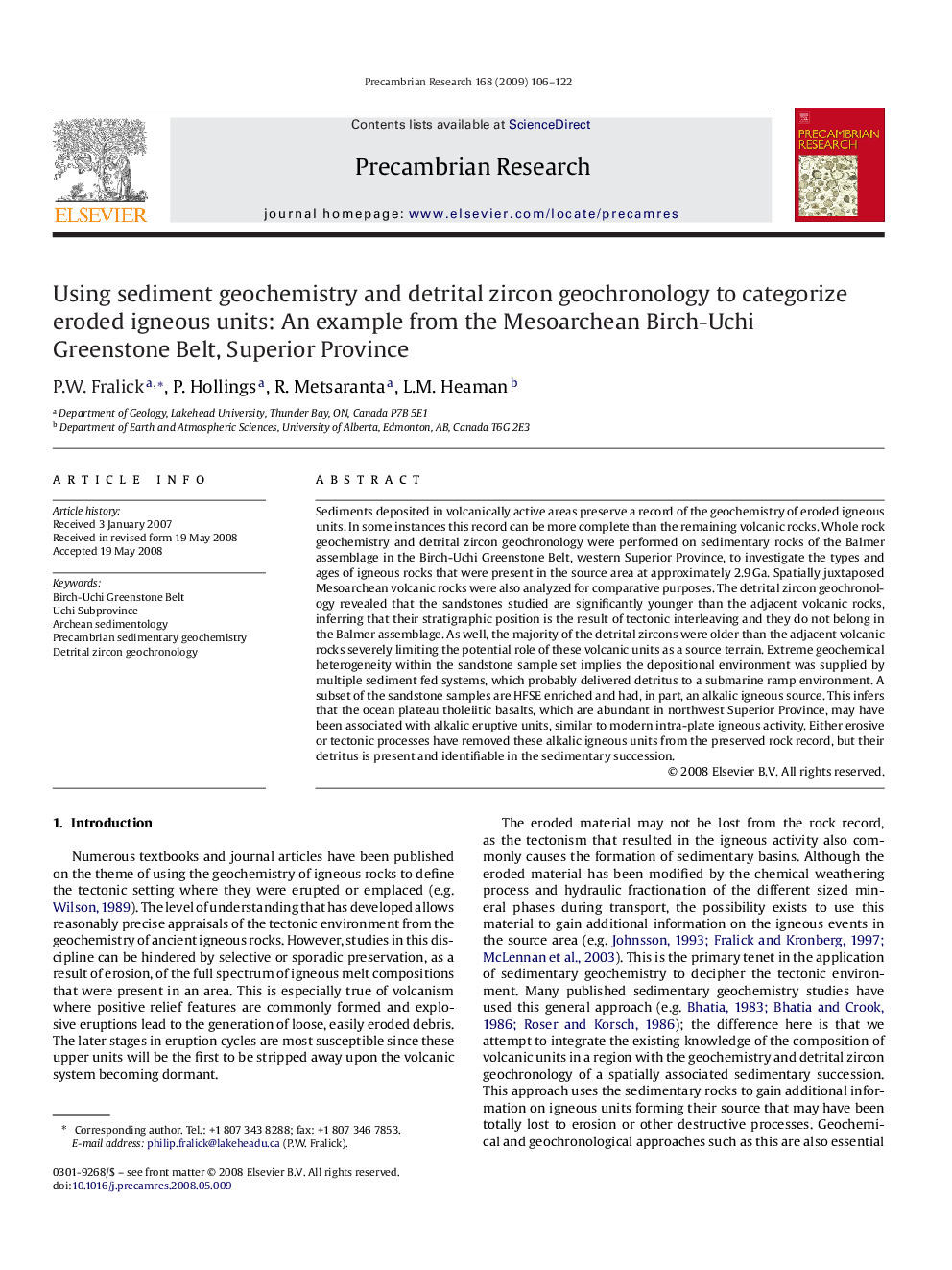| Article ID | Journal | Published Year | Pages | File Type |
|---|---|---|---|---|
| 4724120 | Precambrian Research | 2009 | 17 Pages |
Sediments deposited in volcanically active areas preserve a record of the geochemistry of eroded igneous units. In some instances this record can be more complete than the remaining volcanic rocks. Whole rock geochemistry and detrital zircon geochronology were performed on sedimentary rocks of the Balmer assemblage in the Birch-Uchi Greenstone Belt, western Superior Province, to investigate the types and ages of igneous rocks that were present in the source area at approximately 2.9 Ga. Spatially juxtaposed Mesoarchean volcanic rocks were also analyzed for comparative purposes. The detrital zircon geochronology revealed that the sandstones studied are significantly younger than the adjacent volcanic rocks, inferring that their stratigraphic position is the result of tectonic interleaving and they do not belong in the Balmer assemblage. As well, the majority of the detrital zircons were older than the adjacent volcanic rocks severely limiting the potential role of these volcanic units as a source terrain. Extreme geochemical heterogeneity within the sandstone sample set implies the depositional environment was supplied by multiple sediment fed systems, which probably delivered detritus to a submarine ramp environment. A subset of the sandstone samples are HFSE enriched and had, in part, an alkalic igneous source. This infers that the ocean plateau tholeiitic basalts, which are abundant in northwest Superior Province, may have been associated with alkalic eruptive units, similar to modern intra-plate igneous activity. Either erosive or tectonic processes have removed these alkalic igneous units from the preserved rock record, but their detritus is present and identifiable in the sedimentary succession.
